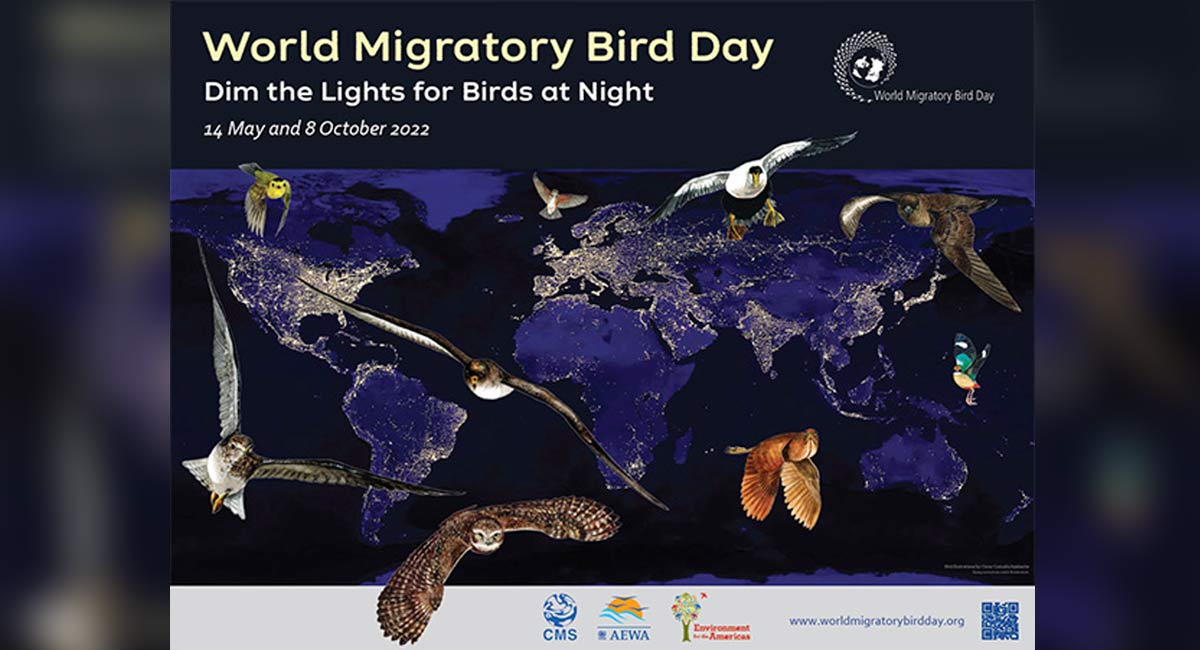Dim the lights for migratory birds tonight

New Delhi: Light pollution and its impact on migratory birds is the focus of World Migratory Bird Day 2022, a global campaign that aims to raise awareness on migratory birds and the need for international cooperation to conserve them.
Global activities to mark the day that falls twice — on May 14 and October 8 — is under the theme “Dim the Lights for Birds at Night”.
Light pollution is increasing around the globe. More than 80 per cent of the world’s population is currently estimated to live under a “lit sky”, a figure closer to 99 per cent in Europe and North America.
The amount of artificial light on the earth’s surface is increasing by at least 2 per cent each year and could be much greater.
Amy Fraenkel, Executive Secretary of the Convention on the Conservation of Migratory Species of Wild Animals (CMS), told IANS in a statement: “Natural darkness has a conservation value in the same way as clean water, air, and soil. A key goal of World Migratory Bird Day 2022 is to raise awareness of the issue of light pollution and its negative impacts on migratory birds.
“Solutions are readily available, and we hope to encourage key decision-makers to adopt measures to address light pollution.”
Light pollution is a significant and growing threat to wildlife, including many species of migratory birds. Every year, it contributes to the death of millions of birds. It alters the natural patterns of light and dark in ecosystems. It can change birds’ migration patterns, foraging behaviours, and vocal communication.
Attracted by artificial light at night, particularly when there is low cloud, fog, rain or when flying at lower altitudes, migrating birds become disorientated and may end up circling in illuminated areas.
Depleted energy reserves put them at risk of exhaustion, predation, and fatal collision with buildings.
Jacques Trouvilliez, Executive Secretary of the Agreement on the Conservation of African-Eurasian Migratory Waterbirds (AEWA), said: “An enormous diversity of birds, active at night, experience the impacts of light pollution.
“Many nocturnally migrating birds such as ducks, geese, plovers, sandpipers and songbirds are affected by light pollution causing disorientation and collisions with fatal consequences. Seabirds such as petrels and shearwaters are attracted by artificial lights on land and become prey for rats and cats.”
Guidelines on light pollution covering marine turtles, seabirds, and migratory shorebirds were endorsed by the CMS Parties in 2020.
Among their recommendations, the guidelines set forth six principles of best lighting practices and call for Environmental Impact Assessments for relevant projects that could result in light pollution.
These should consider the main sources of light pollution at a certain site, the likely wild species that could be impacted, and facts about proximity to important habitats and migratory pathways.
New guidelines focusing on migratory landbirds and bats are currently being developed under CMS. They will be presented to CMS Parties for adoption at the 14th Meeting of the Conference of the Parties to CMS in 2023.
Numerous governments, cities, companies, and communities around the world are already taking steps to address light pollution.
In some cities, particularly in North America, initiatives such as “Lights Out” programmes and bird-friendly building guidelines aim to protect migrating birds from light pollution by encouraging building owners and managers to turn off any unnecessary lighting during migration periods.
Susan Bonfield, Director, Environment for the Americas, said: “World Migratory Bird Day is a call to action for international migratory bird conservation. As migratory birds’ journey across borders, inspiring and connecting people along the way, it is our aim to use the two days in 2022 to raise awareness of the threat of light pollution and the importance of dark skies to bird migrations.”







